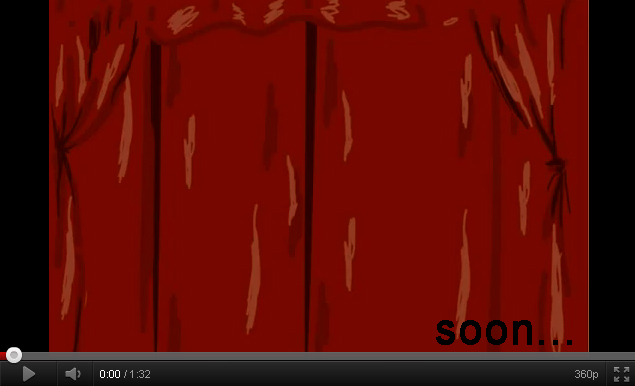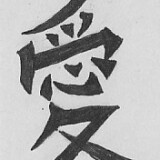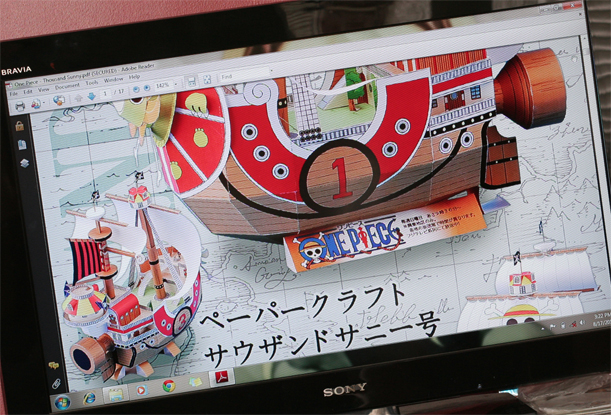Christmas Jingle
December at last, and just like what we promised in our last post, we’ll be sharing the product of our year-end challenge for this year. Presenting: Jingle Bells featuring BNP Design Studio! A little plugging for our baby project – Talk@tee too! Pretty neat, huh? Okay… Maybe not… Just kidding! But really..Please don’t take us seriously We were just tinkering with some drawings when the idea crossed our minds. If you want to produce a music video like this for fun, though, here’s how we did it: The Drawing Part This was probably the easiest part of our experiment. The BNP staff is mainly composed of illustrators and digital artists, so coming up with caricatures of the gang came easy, not to mention that we already have our original talk@tee characters to work with. Don’t be discouraged if drawing isn’t your forte, though. Caricatures don’t have to be visually stunning or technically accurate, so just have fun drawing what you want. The Recording Part Nope, you don’t need a recording studio and recording equipment for this. Of course it would be great if they’re readily available for your use, but in our case an electronic keyboard and a regular headset were more than enough. We just used the microphone of the headset to record our voices and the keyboard to play the sounds of the various instruments we used in the music video such as the drums, guitars, cymbals, and shaker. The Editing Part Sound editing may come across as an intimidating prospect for some, but it’s not really as difficult and complicated as it sounds unless you’re aiming for a commercial CD. It doesn’t have to be costly either as there are several decent sound editing software that you can get from the internet for free and there are also those that you can use until the trial period has expired. With some cutting here and some pasting there, you’ll be good to go. The Animating Part The complexity of the animation process would depend on what kind of animation you want to do (traditional or 3D) and how realistic you want your animated illustrations to be. Since we just wanted a simple traditionally animated video, our efforts were mostly focused on recreating multiple frames of the same illustrations with some slight alterations and combining them in a way that creates the illusion of movement. Post Production Most of the work we had to do was done during the recording and animating part, so there wasn’t much left for the post-production stage. We just combined the animated illustrations and background music together, added some credits, uploaded them on our social networking sites, crossed our fingers for luck, and that was it – mission completed. b ^_~ d Resources If you’re curious about the programs we used for this project, you can try them out for yourself by checking the list below. Adobe Illustrator (Illustration) Adobe Audition (Sound Editing) Adobe Premiere (Animation) Macromedia Flash...
read moreChristmas Teaser
It’s that time of the year again, and just like last year when we did the 101 Christmas Tree Designs Challenge, we decided to push our limits one step farther by issuing another challenge to ourselves – only this time that challenge took us way outside of our comfort zones. 😀 We’d like to tell you all about it now, but we want to save it for the month of December so you can truly feel the holiday spirit behind it – and might as well give ourselves some time to enjoy what remains of our *cough* dignity *cough* before our little experiment goes public. 😀 Until then! Keep an eye on the site for updates, alright?...
read moreBasic Writing in Japanese
Do you remember the time we taught you some basic words and sentences in Japanese back in January of 2011? This time we’ll teach you how to write them. Well, not exactly the same words and sentences but we’d share an overview of what we studied today for our October Creativity Workshop. For starters, the Japanese have three ways of writing. There is the Kanji, the Hiragana and the Katakana. Of the three kinds of writing mentioned, two of them – Katakana and Hiragana – are syllabaries composed of characters representing a syllable usually formed by combining a consonant and a vowel, while one – Kanji – is composed of symbols that represent a whole variety of things. Let’s take a look at these examples: Image source: www.w3.org The symbols that you can see at the first and second rows are the Kanji characters. Kanji characters are of Chinese origins and are used for words that trace its roots to the Chinese language. Say for example the word love, both Chinese and Japanese Kanji writes it as . The same goes for strength which is written in Chinese and Japanese as . They have different ways of pronouncing them though, so you might want to consider the context of the word or sentence they were used in when reading. The cursive characters that you can see on the third row, on the other hand, are Hiragana characters and they are used for native Japanese words. Say for example, you want to write Konnichiwa which means Hello in Japanese, you can write it like this or if you want to say Ogenki desu ka which means How are you, you can write it like . Lastly, the angular characters that you can see under the Hiragana table are the Katakana characters. They are commonly used for words that have been borrowed from other languages. However, please note that loan words are written the way they are pronounced in Japanese and not the way they are spelled in their original language. Take the word soccer for instance. In Japanese it is pronounced sakka* so it is written as . This is similar with the word basketball which is pronounced as basuketboru** in Japanese and written as . Those are pretty much the basics. Of course the language is much more complex than that, but if you just want something to scribble on your notes, use as a design on your shirt, or use as a nametag to mark your lockers like we did with ours below, learning those can be a good start. You can learn more of the Japanese language and Japanese writing systems by checking out these resources: Hiragana – contains some background information and basic rules on writing Hiragana Katakana – contains some background information and basic rules on writing Katakana Basic Kanji – contains a compilation of basic Kanji characters that you will need to learn to write more complicated Kanji later Kanji-Hiragana-Romaji Converter – features a handy tool that converts Kanji and Hiragana into Romaji (Japanese words written using the English alphabet) Japanese-English Dictionary – features an online Japanese-English/English-Japanese dictionary that provides translation for both languages as well as illustrations on how to write them. Japanese Pronunciation – provides a brief overview of Japanese pronunciation Japanese Loan Words – provides helpful tips in pronouncing Japanese loan words as well as some common examples Notes: *There is no ‘er’ sound in Japanese, so it is replaced with an “a” sound instead. This is true for words like gemu oba (game over), pasokon (short for personal computer),...
read moreQMC Fun Run with Rafael Rosell
Time sure flies fast – our blog is now a year old. Imagine that. I guess we’ve been having so much fun dabbling our hands in all sorts of crafts and activities that we didn’t notice the passage of time. Speaking of fun, we were discussing t-shirt designs for our talk@tee brand when we were invited to join a local Fun Run organized by the Quezon Medical Center for the benefit of its indigent patients. Since we’d love to contribute and run together with celebrity guest Mr. Rafael Rosell, we gamely signed up for the event! And here’s the poster we laid out for them: Clad in jerseys and sweatpants, we gathered at the QMC parking lot on the morning of September 25 together with 1,500 other participants. A firing shot signaled the start at around 6:00 AM, and by 7:30, most of the 3, 5, and 10 km runners were already back in the venue for the announcement of winners, awarding of special prizes, and some photo opportunity with Rafael Rosell. It sure was an exciting Sunday morning and we did have a lot of fun. We were also given an opportunity to introduce Tok, Kat and Tee of talk@tee – but that’s for another fun run post on our talk@tee...
read more3D Ship Model: One Piece’s Thousand Sunny
It’s been a while since our last experiment with crafts and stuff, so we decided we’ll share a creative activity with you that we have stumbled upon while browsing the internet. Thousand Sunny is a pirate ship from one of our favorite Japanese animated series – One Piece. For this entry, we’ll tell you how we were able to make one for ourselves using the tutorial released by Toei Animation which we downloaded from an amazing blog about Papercrafts. But before we get on with the story, these are the materials that we used: Paper Glue Scissors/Cutter Stuffing With those in hand, we started things off by downloading the Thousand Sunny PDF file and printing the document using an A4 sized photo paper which we chose because of its thickness and glossy look. The only downside that we discover is that it can be a bit difficult to glue pieces of photo paper together compared to ordinary ones. Once we had everything printed out, we cut around the edges of the images to get the parts that we need for assembling the ship, using a cutter to clear away unwanted parts from trickier pieces that involved holes and gaps. After that, we moved on to the second part (folding) by using the PDF document as a guide. The text was entirely written in Japanese, though, so we just ended up following the illustrations and guessing what the words meant. We then proceeded to assembling the different parts of the ship by gluing the pieces to their rightful places and merging all the components together, capping things off by adding some stuffing to the hollow parts of the ship to make it a little sturdier. And here it is: Thousand Sunny ready to set sail! \ ^_^...
read more




